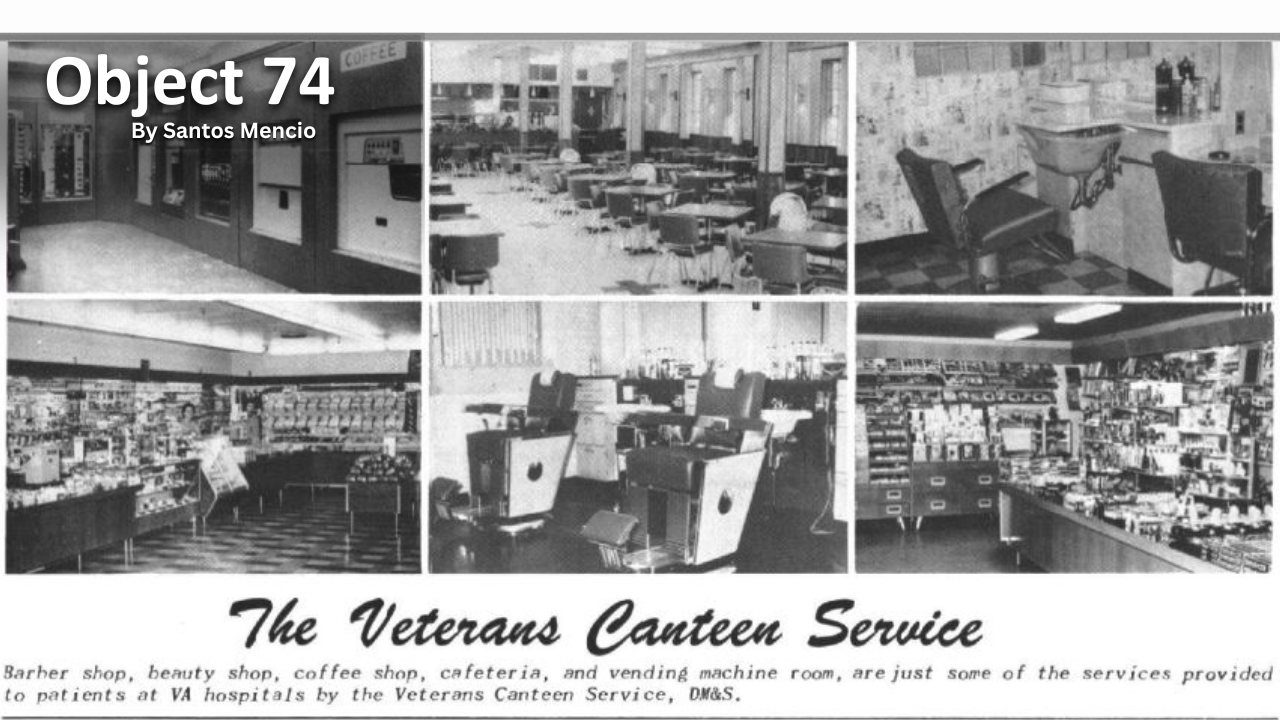
History of VA in 100 Objects
Object 74: Photo Spread on Veterans Canteen Service
When U.S. Army General Omar N. Bradley became head of VA at the end of World War II, he was determined to improve the quality of care across the agency’s hospital system. His commitment to providing better patient services extended to the stores and canteen service found in VA hospitals. Veterans and advocacy organizations complained that the concessions operated by third-party vendors often charged inflated prices and delivered substandard services.
After VA conducted an internal investigation that validated Veterans’ concerns, Bradley took the issue to Congress. His desire to find a better solution for Veterans led to the establishment of the Veterans Canteen Service.
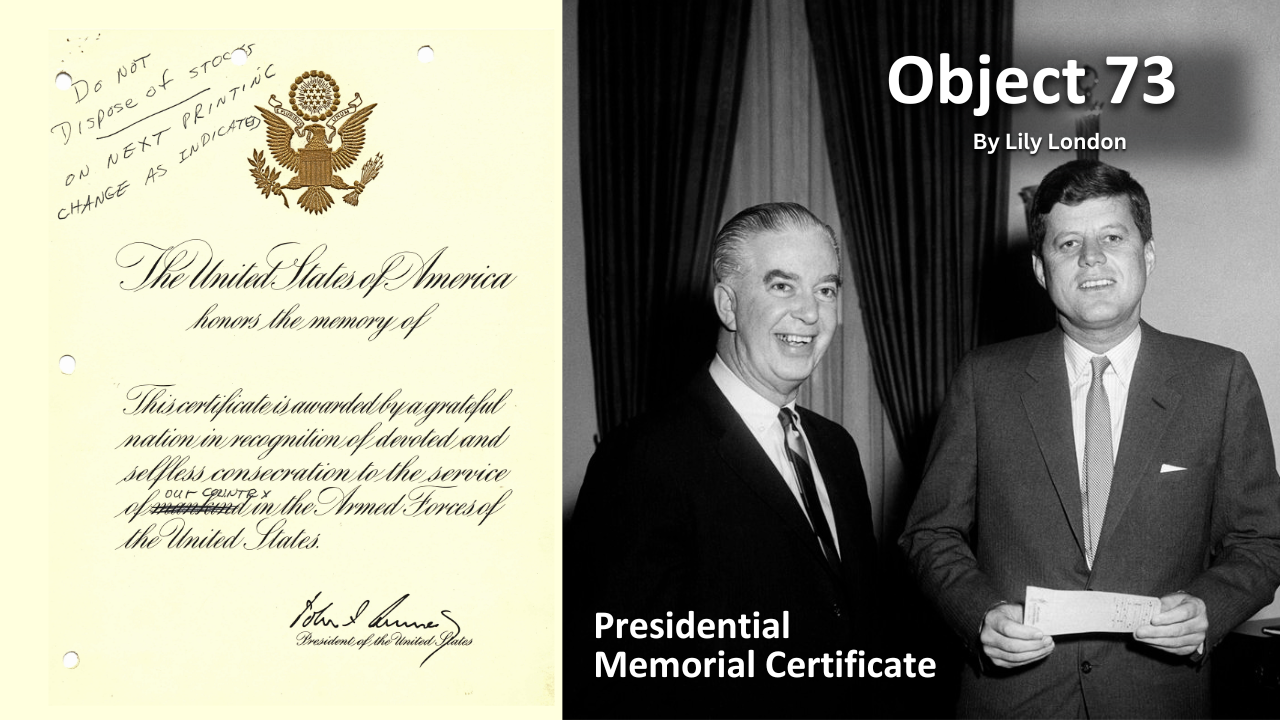
History of VA in 100 Objects
Object 73: Presidential Memorial Certificate
Just after New Year’s Day in 1962, World War II Army Veteran Benjamin B. Belfer sent a letter to his U.S. Senator, Hubert Humphrey of Minnesota, suggesting a simple yet powerful way for the government to honor deceased service members. The tradition was for family members to receive the folded American flag that had been draped over the Veteran’s casket during the funeral service. Belfer proposed presenting the next of kin with a memorial certificate signed by the president of the United States in addition to the burial flag. The certificate, he wrote, would be “a keepsake that will never be forgotten by the family and relatives and friends of the departed Veteran.”
After receiving Belfer’s letter Humphrey wasted no time in sharing his idea with the head of the Veterans Administration, John S. Gleason, Jr. Gleason also saw the value in the proposal and in mid-February his staff worked on creating a design for the certificate and wording. On March 6, the certificate was shown to President John F. Kennedy, Jr.. The following day, Kennedy sent Gleason a short note expressing his wholehearted approval. “I think it is an excellent idea, and I believe that the certificate is tastefully and appropriately done,” he wrote, adding that the issuing of certificates should begin “as quickly as possible.”
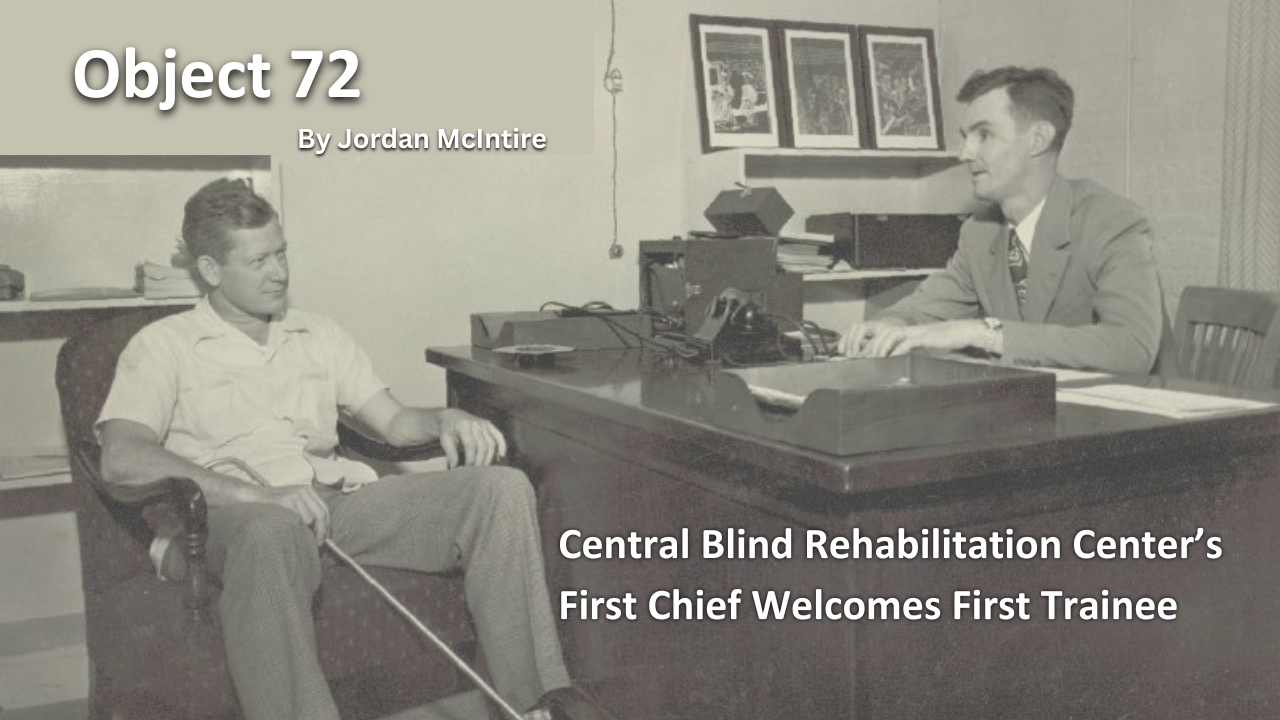
History of VA in 100 Objects
Object 72: Central Blind Rehabilitation Center’s First Chief Welcomes First Trainee
On July 4, 1948, the Central Blind Rehabilitation Center at the Edward Hines, Jr., VA Hospital in Illinois admitted its first trainee. The Hines Center ushered in a new era of care for blinded Veterans. Yet, its opening was nearly three decades in the making.
Formalized federal care for blinded Veterans dates back to 1917, with the opening of Army General Hospital #7. Later the need to provide rehabilitative services to vision-impaired Veterans returned after World War II.
In 1948, VA opened the Central Blind Rehabilitation Center at the Hines VA Hospital outside of Chicago, Illinois. It's location was chosen because of the large Medical Rehabilitation department already in place was well-suited to provide oversight.
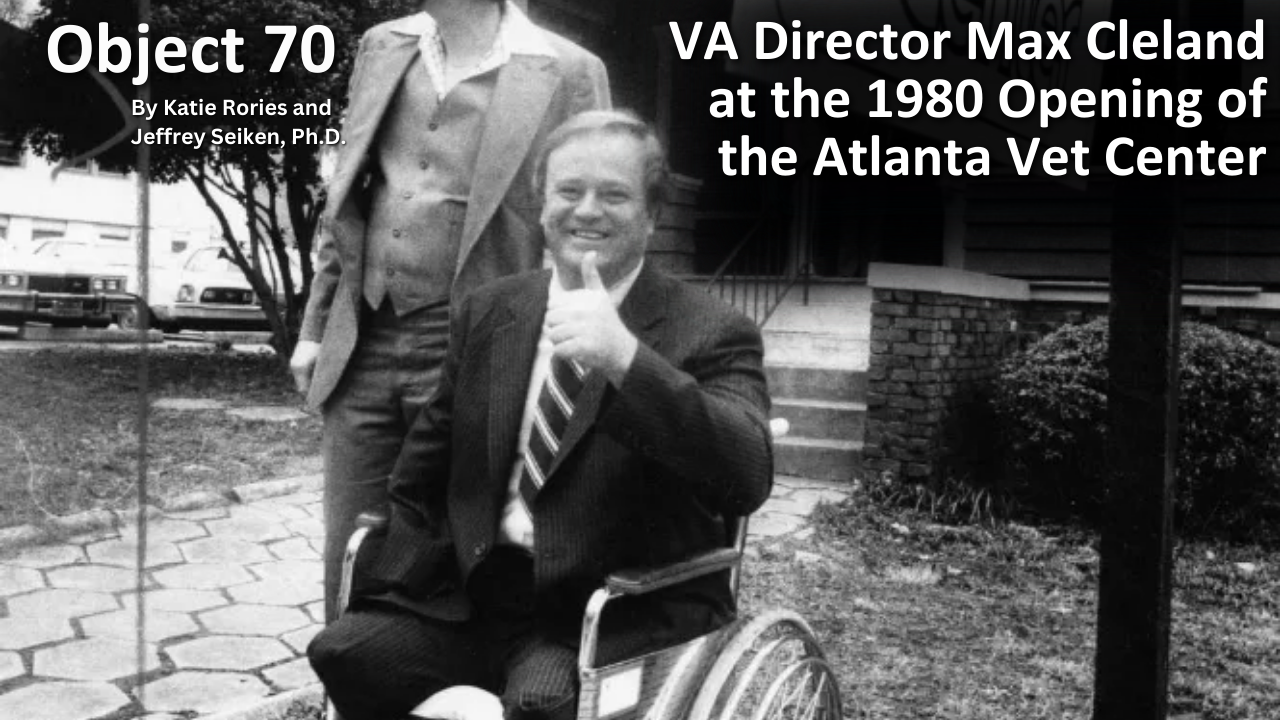
History of VA in 100 Objects
Object 70: VA Director Max Cleland at The 1980 Opening of The Atlanta Vet Center
After the Vietnam War, the nation was eager to put the divisive and unpopular conflict behind it. However, the 3.4 million Veterans who served in the Vietnam theater did not have that luxury. One of those Veterans was Max Cleland who lost his legs in the war. He made it a mission to advocate for his fellow Veterans, who struggled with the aftereffects of the war. Eventually, this led to Cleland turning to politics and at 34 being appointed as the youngest Administrator for the Veterans Administration.
During his tenure at VA, Cleland delivered on his goal of providing readily accessible mental health and readjustment counseling designed expressly for Vietnam Veterans. In 1979, VA launched an initiative called Operation Outreach to establish community-based Vet Centers across the country. In one year there were 91 Vet Centers. Today there are over 300.
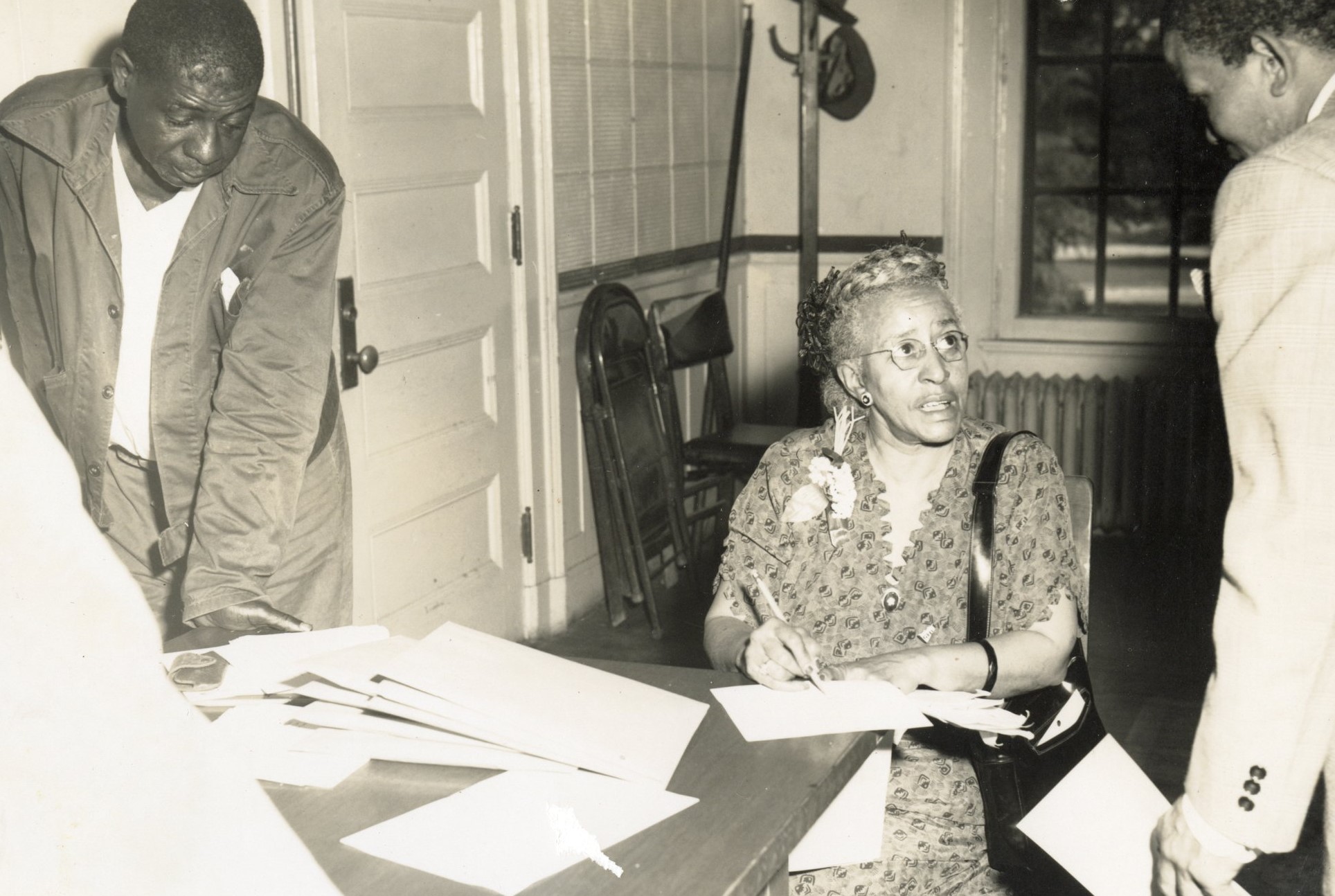
Featured Stories
Tuskegee’s Librarian: Dr. Sara Marie Johnson Peterson Delaney
Dr. Sara (Sadie) Marie Johnson Peterson Delaney was a trailblazer in promoting libraries and literacy – and worked at what would eventually become today’s VA. She was the Chief Librarian of the VA hospital in Tuskegee, Alabama, for 34 years.

Curator Corner
From the Collection: More Historic Thanksgiving Menus
In 2021, as our collection was in the early stages of being established, we featured a story on VA Thanksgiving meal menus from 1930 and 1970. That menu collection has since grown, with items dating back to 1903 now on hand. Check out the latest 'From the Collection' story on Thanksgiving menus though the years.

History of VA in 100 Objects
Object 69: Stereograph of Landscaped Grounds at Dayton National Home
The federal government in the Civil War arranged to care for returning soldiers too weakened by their wounds, the lingering effects of disease, or the hardships of military life. In the decades after the war, the government established the National Home for Disabled Volunteer Soldiers.
The Board of Managers for the National Home added such amenities as chapels, libraries, theaters, and playing fields. Great care also went into the shaping of the physical environment. The board employed landscaping architects to design the grounds of each branch to create an attractive, idyllic setting for residents and visitors alike. Influenced by the picturesque landscape movement, they adorned the National Home campuses with man-made ponds and lakes, ornate flower gardens, elaborate plantings of shrubs and trees, winding trails, and other features to beautify the properties.
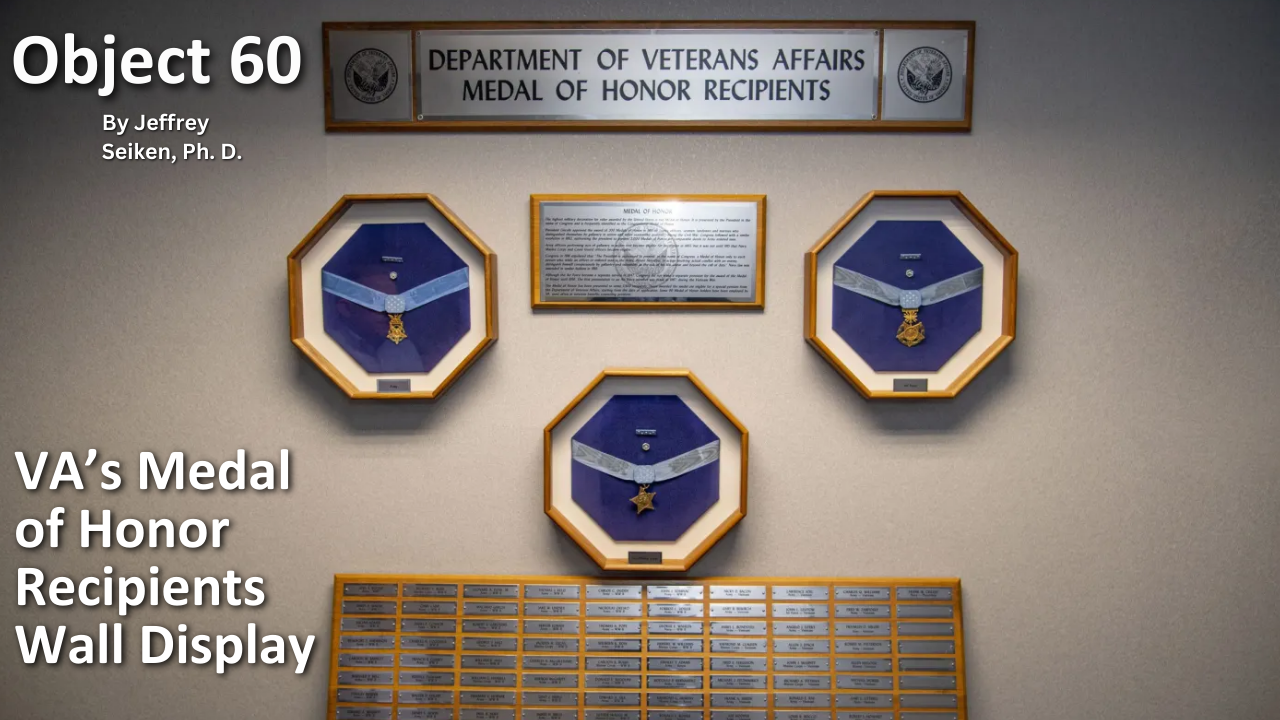
History of VA in 100 Objects
Object 60: VA Medal of Honor Recipients Wall Display
The Congressional Medal of Honor is the nation’s highest decoration for valor in the military. More than 1,000 have been awarded, and 98 of those recipients worked at VA. A wall display outside VA's Under Secretary for Benefits in Washington, D.C. pays tribute to each of those individuals, whose stories are tied to the legacy of Veterans serving Veterans.

History of VA in 100 Objects
Object 57: Omaha VA Hospital Nuclear Reactor
In August 1945, the United States detonated atomic bombs over the Japanese cities of Hiroshima and Nagasaki, ending World War II and ushering in the dawn of the Atomic Age. Two years later, the Veterans Administrations started harnessing this technology for a very different purpose—to conduct medical research by installing a small nuclear reactor at the VA hospital in Omaha, Nebraska.
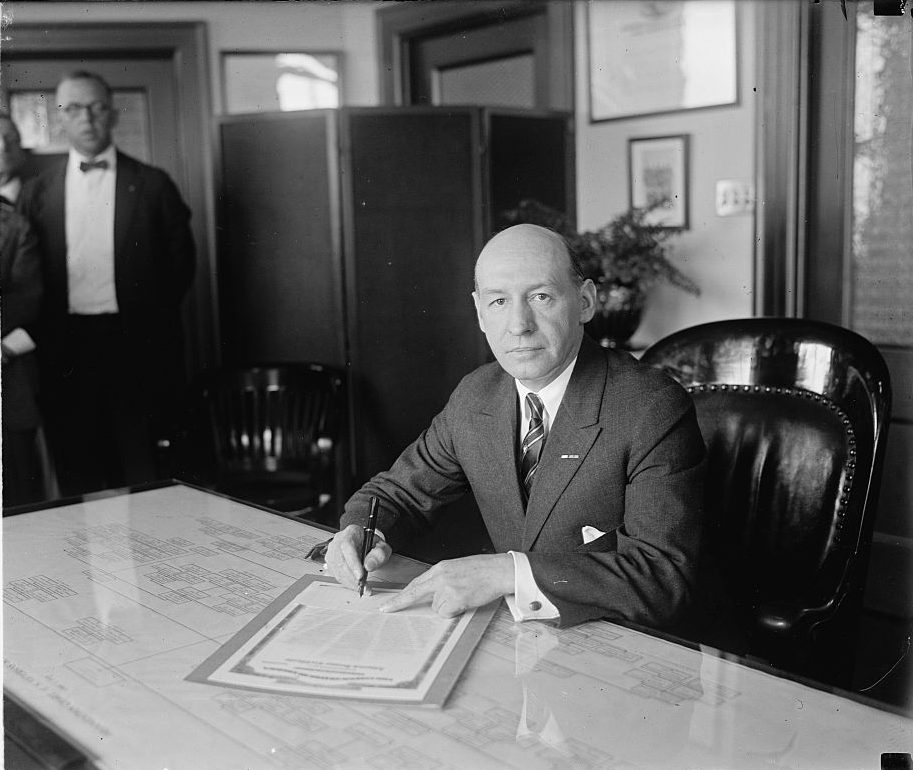
Featured Stories
Brig. Gen. Frank Hines – 1st VA Administrator
Frank Hines was the longest tenured VA leader, from 1923 until 1945 and end of World War II. He led two different Veteran agencies, first the Veterans Bureau and then the Veterans Administration. Despite constant challenges and changes to the system, he was a stable leader for a new federal agency.

History of VA in 100 Objects
Object 46: Harry Colmery’s Handwritten Draft of GI Bill
The massive mobilization of industry and manpower with the United States’ entry into World War II lifted the nation out of the Great Depression. But even as the country enjoyed new heights of economic prosperity, American leaders worried about what would happen after the war. In 1942, Roosevelt formed two separate committees to focus specifically on programs to assist returning Veterans and one produced the GI Bill of Rights.

History of VA in 100 Objects
Object 43: Nurse Recruiting Poster
After World War II, the Veterans Administration faced a dire shortage of nurses. During the war, thousands of nurses and doctors left their positions in VA hospitals to join the armed forces. In early 1944 VA Administrator General Frank T. Hines reported a shortfall of roughly 1,000 nurses in 88 of the VA’s 94 hospitals.


